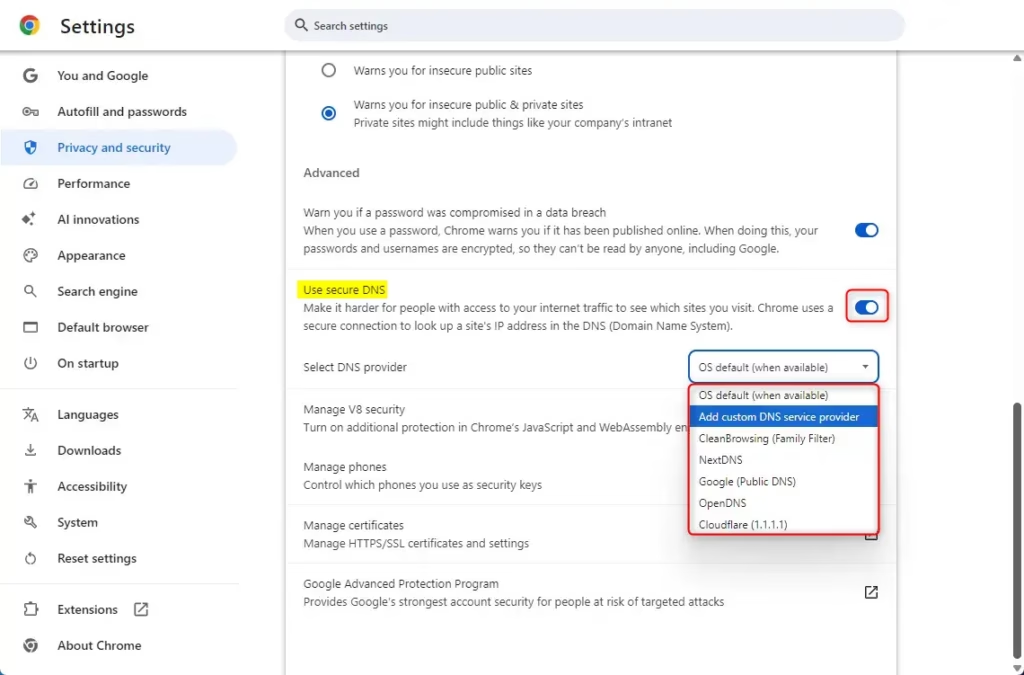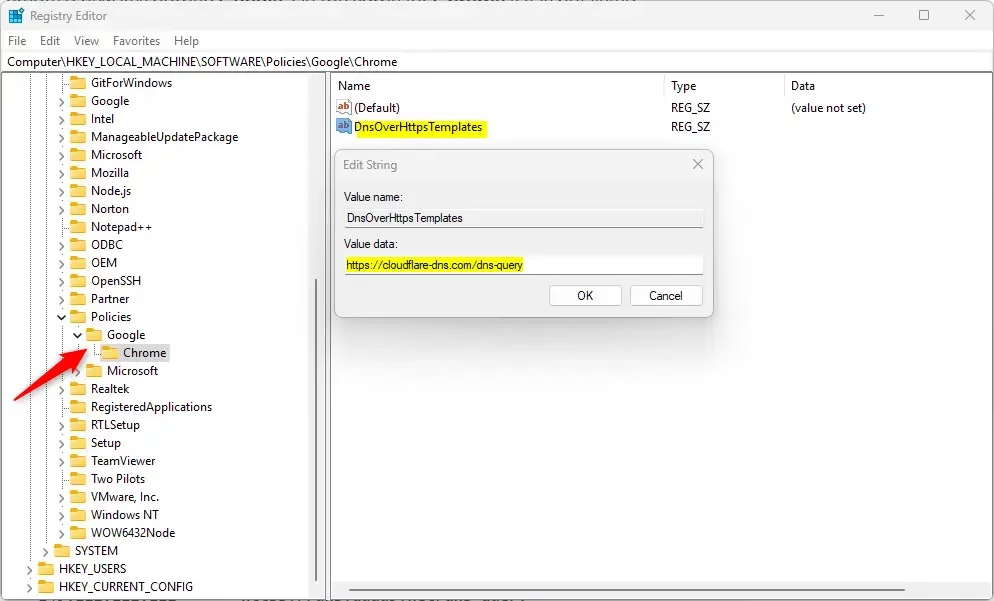This article explains how to select the URI template (DNS provider) for the desired DNS-over-HTTPS resolver in Google Chrome.
Google Chrome is a web browser developed by Google that runs on multiple platforms. It shares the same codebase as Microsoft Edge, making the two browsers nearly identical in their basic functionalities.
When using the Google Chrome browser, you can utilize the DnsOverHttpsTemplates policy to set the URI template (DNS provider) of the desired DNS-over-HTTPS resolver.
If you have configured secure DNS in Chrome and set it to automatic or secure mode, you may need to specify the desired URI template for your DNS providers.
Set Secure DNS Provider in Chrome
When you configure DNS over HTTPS in Chrome, you can use the DnsOverHttpsTemplates policy to set the URI template or provider to use.
Here’s how to do it.
First, open the Google Chrome browser.
Go to the Settings > Privacy and security > Security. Then, turn on “Use secure DNS” and select the DNS provider to use.

You can close the Chrome settings page when finished.
Select Secure DNS Provider in Chrome using the Registry
Another way to set a secure DNS provider in Chrome is to use the Windows Registry Editor.
First, open the Windows Registry and navigate to the folder key path below.
Remember to back up your registry before making any changes, or create a System Restore point as a precaution.
Computer\HKEY_LOCAL_MACHINE\SOFTWARE\Policies\Google\Chrome
In the registry key paths, if you do not see Google, right-click on the Policies key and create a new key named Google. Do the same for Chrome if it is not listed.
Once there, right-click Chrome > New > String Value and name the new REG_SZ DnsOverHttpsTemplates.
Double-click and open the DnsOverHttpsTemplates name and set the value to one of the values referenced below.
ServerAddress DohTemplate
------------- -----------
1.1.1.1 https://cloudflare-dns.com/dns-query
2606:4700:4700::1001 https://cloudflare-dns.com/dns-query
2606:4700:4700::1111 https://cloudflare-dns.com/dns-query
1.0.0.1 https://cloudflare-dns.com/dns-query
2001:4860:4860::8888 https://dns.google/dns-query
8.8.4.4 https://dns.google/dns-query
2001:4860:4860::8844 https://dns.google/dns-query
8.8.8.8 https://dns.google/dns-query
2620:fe::9 https://dns.quad9.net/dns-query
2620:fe::fe https://dns.quad9.net/dns-query
9.9.9.9 https://dns.quad9.net/dns-query
149.112.112.112 https://dns.quad9.net/dns-query
To specify multiple DNS-over-HTTPS resolvers, separate the corresponding URI templates with spaces.

Delete the “DnsOverHttpsTemplates” name created above to restore the default behavior and allow users to select a secure DNS provider in the UI.
DnsOverHttpsTemplates
You may have to reboot your computer to apply the changes.
That should do it!
Reference:
Conclusion:
- Configuring DNS-over-HTTPS in Google Chrome enhances your browsing security and privacy.
- You can easily select your preferred DNS provider through Chrome settings.
- The Windows Registry Editor offers an alternative method to set DNS templates for advanced users.
- Remember to back up your registry before making any changes to avoid potential issues.
- Reboot your computer to apply the changes for a seamless experience.
- Utilizing secure DNS helps protect against DNS spoofing and other security threats.

Leave a Reply